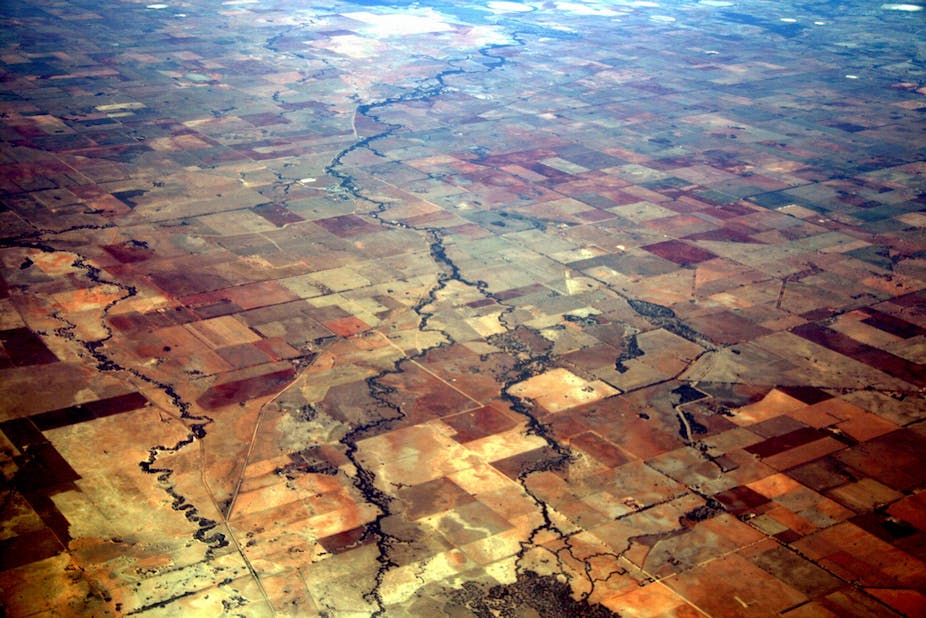With the recently leaked discussion paper by the Coalition reigniting old passions for a northern irrigated food bowl, Australia must again contemplate its vision for the north. Is this our chance to learn from what we’ve messed up down south? Or will we ignore the north’s stark environmental limits and saddle up the bulldozers regardless?
The vision for a northern Australian food bowl is a curious aspect of our nation’s psyche. For the past century, the vast, largely intact savanna ecosystems across northern Western Australia, the Northern Territory and Queensland have persisted in the minds of southern developers, politicians and other “visionaries”.
Two centuries of agriculture in the south east, plagued with droughts, poor soil management, urban expansion and rising populations, has led to degradation of production systems.
For many, the solution to this dilemma is to look north. However, as those that have lived and endured its history will understand, northern Australia seems more likely to reward those that have respected and understood its harsh climatic extremes and environmental limits.
New visions
In the Coalition discussion paper, the first “vision” is of “developing a food bowl…which could double Australia’s agricultural output”. In order for this to be achieved the Coalition will aim to “add flexibility to land use controls and reduce unnecessary regulation and approval processes”.
The trap of the north is created by its appearance as an untouched backup plan to failures in southern landscape management. The Institute of Public Affairs highlight this perspective, stating “the north remains underdeveloped and it is fantastic that the Coalition is looking to unleash its potential.”
By contrast, the NT Environment Centre point out that “the north is a graveyard for failed agricultural projects inspired by ‘visionary’ southern politicians”.
If a coalition government does ride to victory in the 2013 election as predicted, it is likely a new battle will be played out on familiar ground.
Will we consider and develop the north in a sustainable way that reflects and embraces the evolution in our 21st century knowledge of this country’s environmental limits?
Or will we blaze on out across the savanna plains with bulldozers and irrigation pipes like the pioneer cowboys of yesterday striving to demonstrate our human ability to tame the harsh Australian landscape?
Ill-fated fantasy
A report by the NT Government in 2011 highlighted that while there is some opportunity for broadscale irrigation in the Katherine-Daly regions of the NT, a food bowl for the north is highly - perhaps naively - optimistic.

Similar findings come from a sustainability report by the Northern Australia Land and Water Taskforce (NALWT): there is no scientific evidence to support a food bowl vision for the north. The landscape is limited by poor soils, water availability and harsh climatic conditions.
On top of the existing environmental limits to agricultural development, climate change is likely to pose further challenges for northern Australia. The north can expect changing rainfall patterns, increasing temperatures, and increased likelihood of extreme climatic events such as cyclones and higher intensity wildfires.
Such changes will have a detrimental impact on the pastoral industry and reduce livestock carrying capacity. As such, climate change adaptation is critical for land use planning in the north over the coming decades.
From a social perspective, agricultural and urban development that erodes natural capital is likely to have a significant negative impact on Indigenous people. Much of the recent successes in Indigenous economic development have related to land management and tourism. Much of the recent successes in Indigenous economic development have related to land management and tourism.
It is important that land-use planning in northern Australia promotes conservation in order to continue to “close the gap” between Indigenous and non-Indigenous economic and social well-being. The recent election commitment by the WA liberal party to create the largest national park in the Kimberley region is an encouraging move for conservative politics.
Expanding agriculture in the north will require extensive clearing of existing savanna woodlands, producing large volumes of greenhouse gas emissions. Estimates of clearing savanna woodlands range from 140 to 220 tonnes of CO₂ per hectare. Such development would be counterproductive to the NT Climate Change Policy of becoming a low land-clearing jurisdiction.
Similarly, such an approach would also contradict policy efforts by the Coalition’s Direct Action Plan to reduce Australia’s emissions through more effective land management.
So what should a vision for northern Australia look like? A good start is to develop policy from a position of mutual respect of the environment and people that live there. As the NALWT report on sustainable development of northern Australia nicely puts it, good policy will demonstrate:
Respect for the rights and interests of the Indigenous Peoples of the north. Respect for the environment. Respect for the critical role that land holders have in caring for country. Respect for Indigenous and western knowledge. Respect for the communities of the north and the need to empower them to create opportunities for their own future.
Critically, a future for the north should demonstrate that we have learnt from the mistakes and failures of the past. While visions of what this looks like will and should be contested, a vision for a food bowl should be finally laid to rest.

